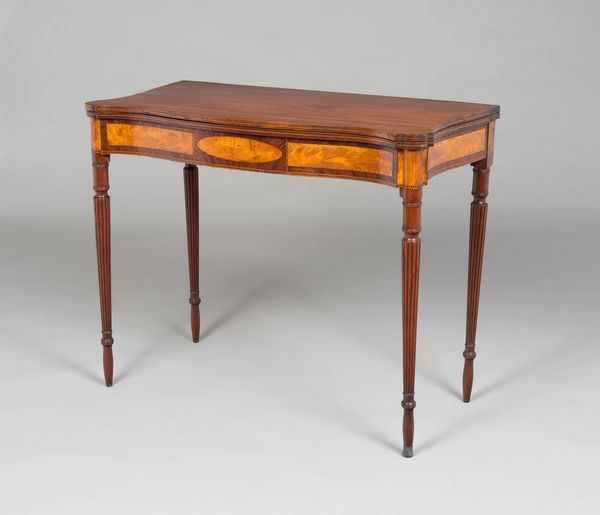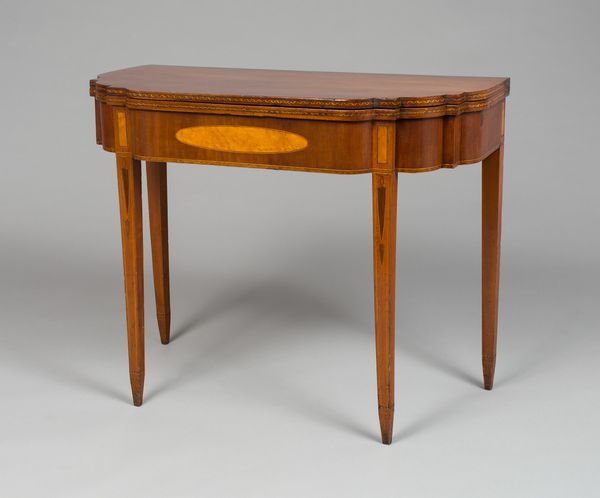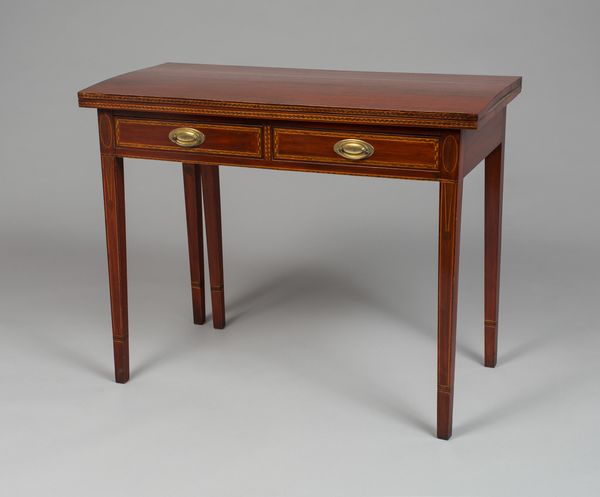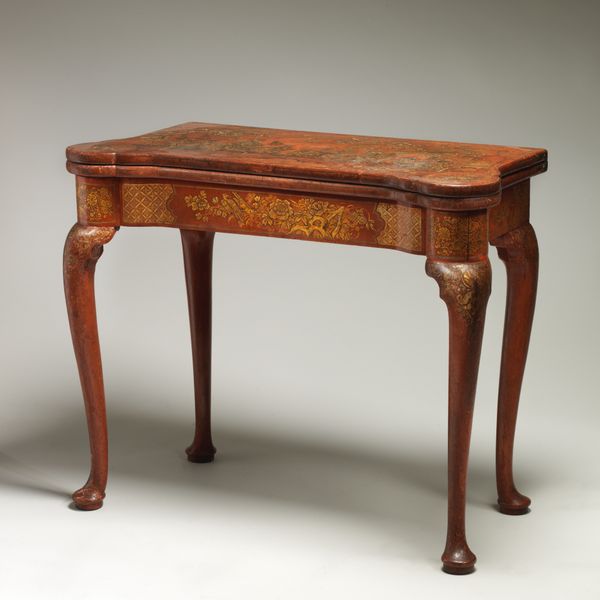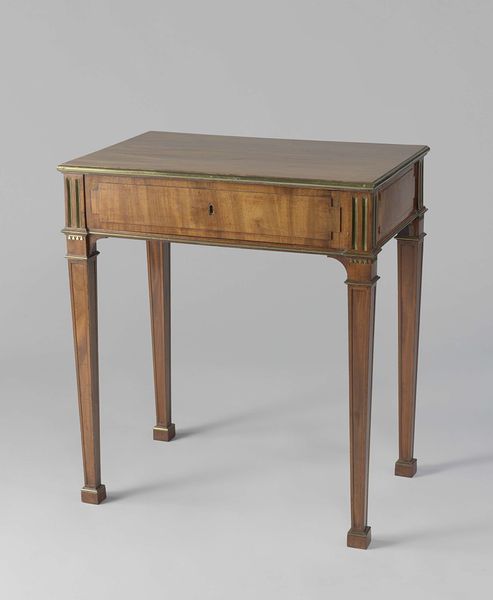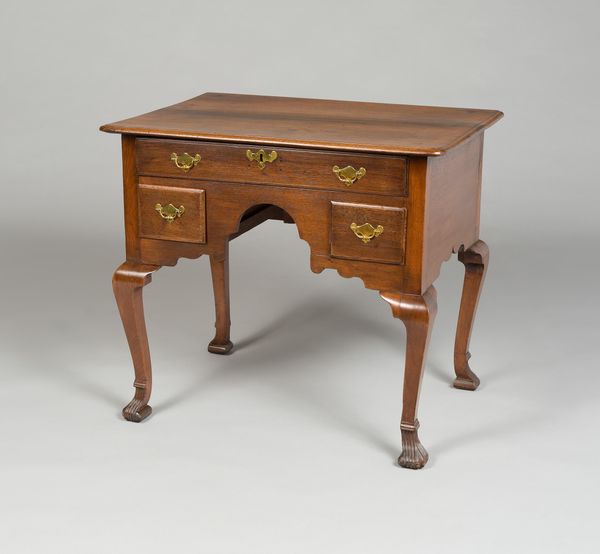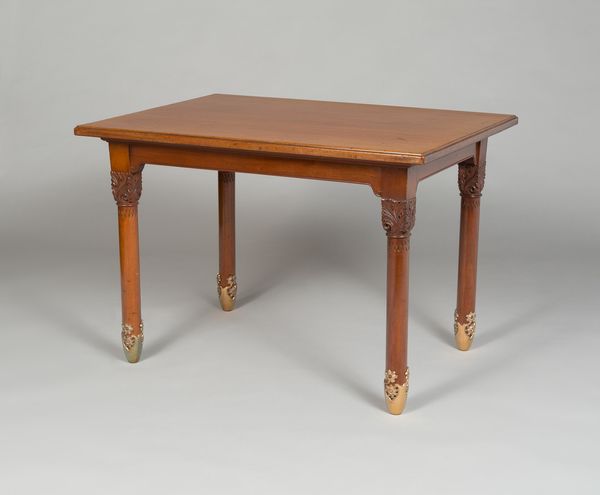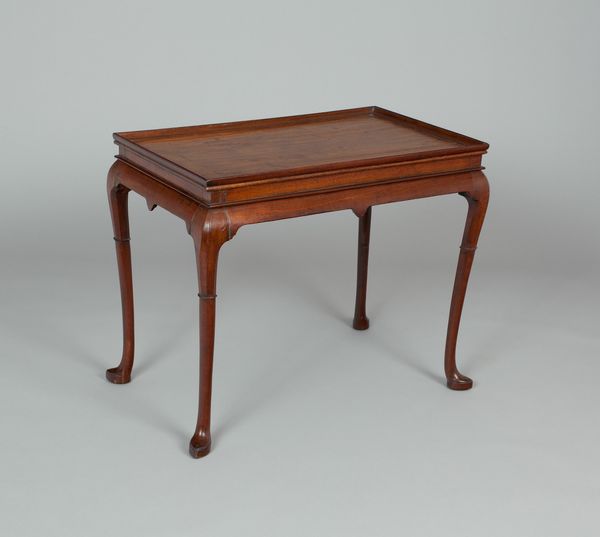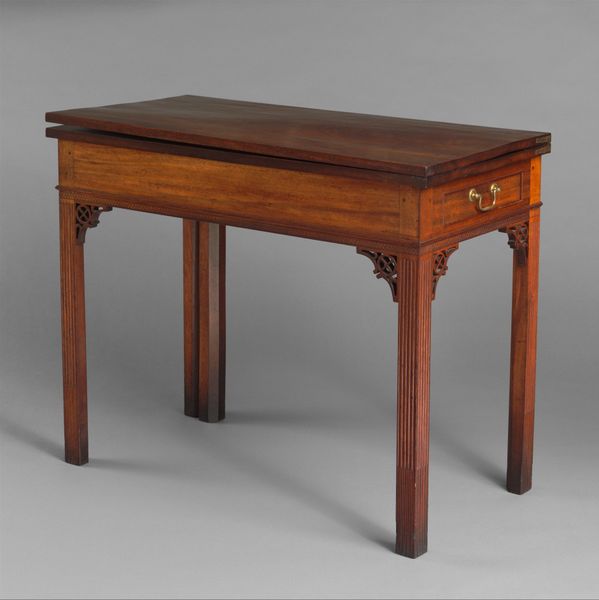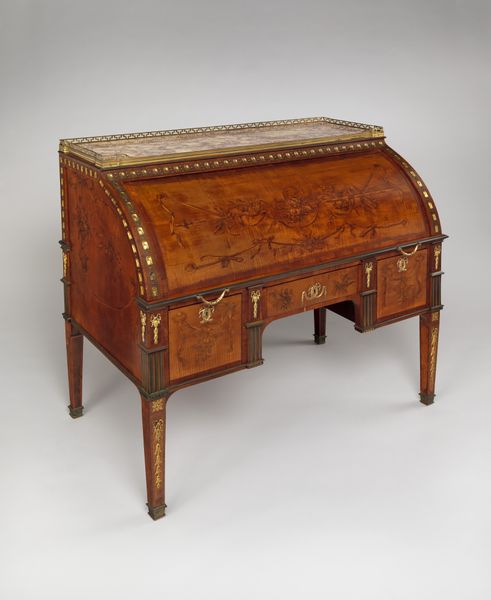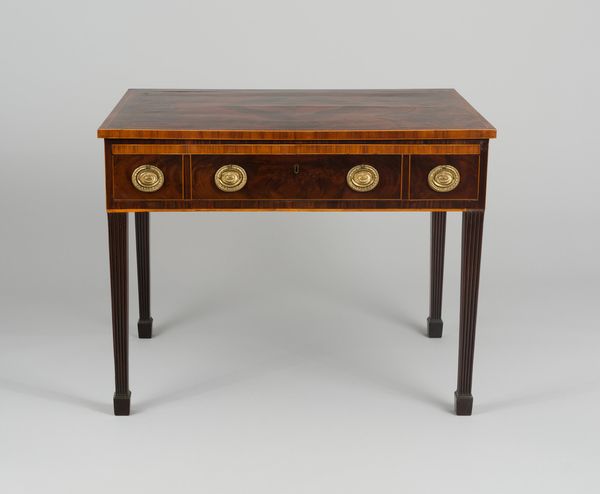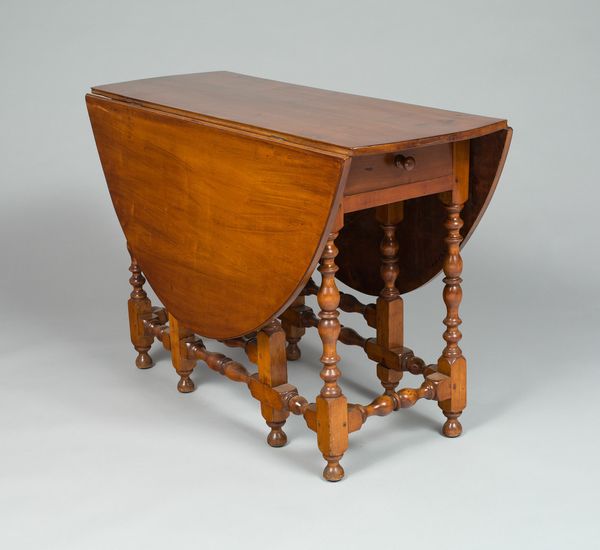
wood
#
table
#
neoclacissism
#
furniture
#
wood
#
decorative-art
Dimensions: 72.3 × 94 (open)/50.1 (closed) × 80 cm (28 1/2 × 37 [open]/19 3/4 [closed] × 31 1/2 in.)
Copyright: Public Domain
Curator: Isn’t that just exquisite? This Pembroke table, made between 1790 and 1805, currently resides here at the Art Institute of Chicago. Notice the delicate marquetry, a technique involving inlaid pieces of veneer to create decorative patterns. Editor: My eye is drawn to those attenuated legs—they're almost unnervingly slender, yet so elegant. The overall effect is one of restrained luxury, wouldn't you say? There is also such warmth coming from this piece! Curator: Absolutely. Pembroke tables were popular during this period, valued for their versatility. The flaps could be raised or lowered, making them suitable for small spaces and various uses from writing to dining. Its location within a household reveals a lot about gender roles and status during this period. Editor: Looking at the ornamentation, I see these repeating stylized flower motifs running down the legs. They suggest a subtle connection to growth, refinement, even fertility, appropriate for a piece found within the domestic sphere. It carries an unconscious language about prosperity and flourishing family life. Curator: Precisely, this embodies Neoclassicism. The clean lines, balanced proportions, and classical motifs reference the art and culture of ancient Greece and Rome, a deliberate effort to evoke those civilizations' values of reason, order, and civic virtue in contemporary British society. It reflected specific ideological concerns around governance at the time. Editor: Though its symbolism seems subtle, those classical motifs give it an air of enduring stability—as if it's trying to instill a sense of order onto a rapidly changing world. It feels both timeless and firmly rooted in its era, doesn't it? Curator: Yes, in many ways furniture such as this, were instruments in communicating political ideology. Looking closely helps reveal hidden depths of cultural attitudes from this era. Editor: The way the craftsman uses recognizable iconography to root this item within a larger cultural understanding makes one ponder. It’s fascinating how something so practical can speak volumes about who we are and who we want to be.
Comments
No comments
Be the first to comment and join the conversation on the ultimate creative platform.
